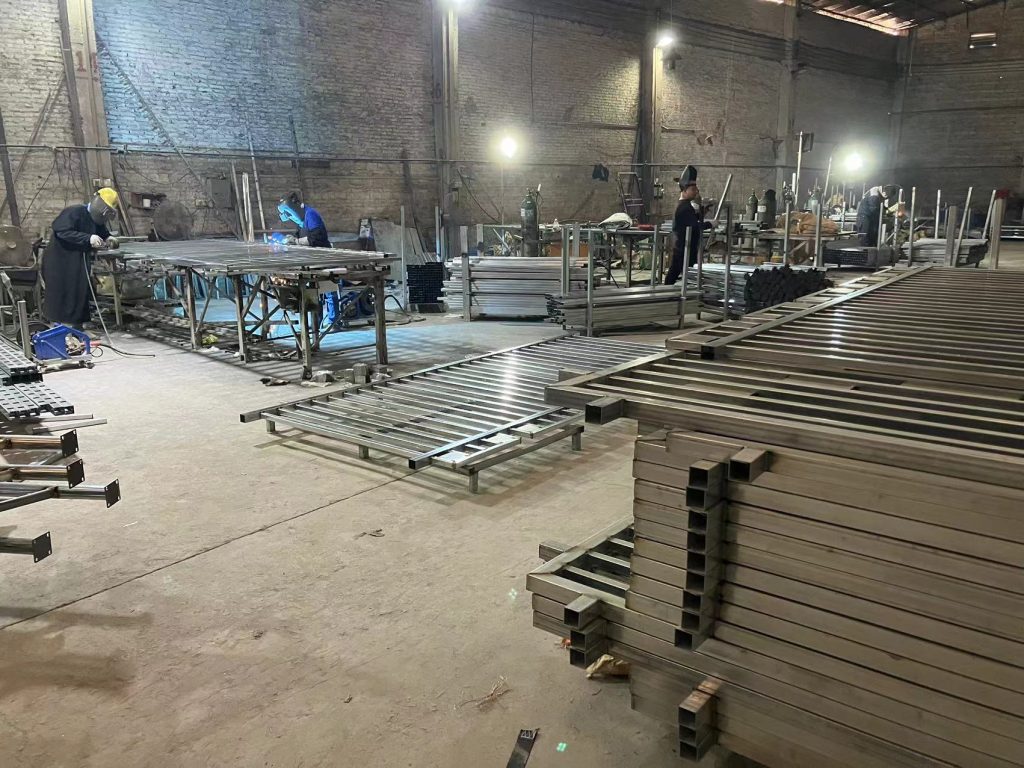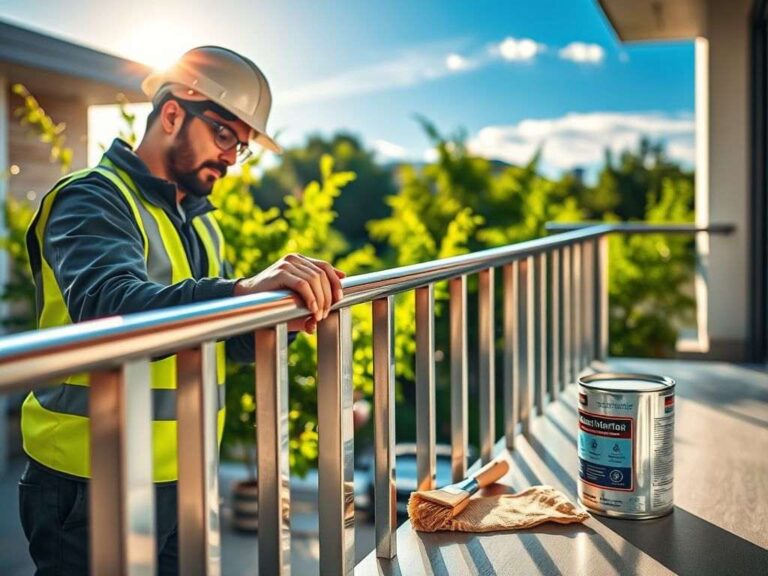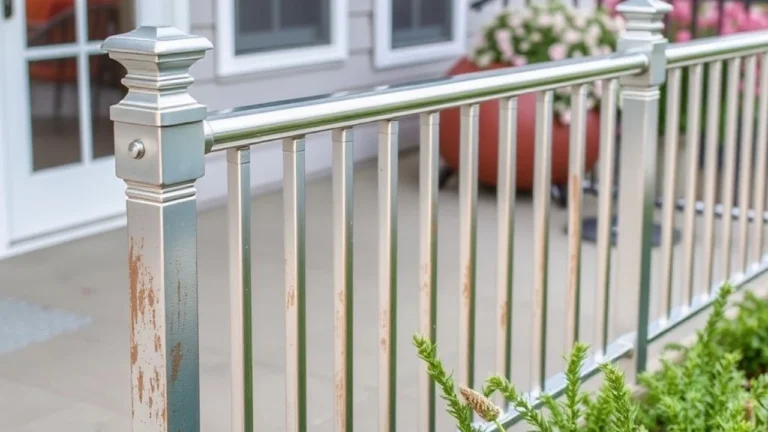The Ultimate Guide to Aluminum Railing Manufacturing: From Design to Installation

Many buildings use aluminum railings on balconies, stairs, and decks. But how do manufacturers create these railings? The production process includes key steps that transform raw aluminum into a finished, functional product.
Understanding the production process helps you appreciate the craftsmanship behind aluminum railings. Next time you see one, you’ll have a better sense of the work that went into making it.
By focusing on precision and technology, the production of aluminum railings results in a product that is both functional and stylish.
Key Aspects of Modern Railing Production
Aluminum Alloy Selection
The choice of aluminum alloy affects strength and corrosion resistance. 6061-T6 offers a tensile strength of 124-180 MPa, while 6063-T5 ranges from 117-207 MPa. Though 6061 is slightly stronger, manufacturers prefer 6063 for coastal environments because of its superior corrosion resistance. As a result, 78% of manufacturers use 6063 for residential projects.
Advanced Extrusion Techniques
Modern extrusion processes use billet temperatures of 450-500°C and pressures above 15,000 psi. This results in tight tolerances of ±0.003 inch/ft. In 2023, Otalum adopted liquid nitrogen cooling during extrusion, reducing post-process warping by 42% compared to air-cooled methods.
Die Design Innovations
Progressive die technology creates complex profiles in a single pass, cutting secondary machining by 83%. Computational fluid dynamics optimizes material flow, lowering scrap rates to 2.1%, down from 8-10%.
Precision Manufacturing Workflows
Creating aluminum railings involves several steps to turn raw metal into a durable, stylish product. Let’s walk through each stage of the process.

1. Designing the Railing
The process begins with design. Engineers create blueprints that include:
- Railing dimensions
- Aluminum alloy type
- Glass specifications (if needed)
- Hardware and installation details
- Manufacturing requirements
These plans ensure that all parts fit together perfectly.
2. Choosing the Right Aluminum
Selecting the right aluminum alloy is crucial for strength and durability. Here’s a comparison of two common alloys:
| Alloy Grade | Tensile Strength (MPa) | Bending Strength (MPa) | Hardness | Corrosion Resistance |
|---|---|---|---|---|
| 6061 | 124 – 180+ | 228 | HB 70-150 | Good, except seawater |
| 6063 | 117 – 207 | 195 | HB 60-95 | Excellent |
Always test the material to ensure it meets requirements before starting production.
3. Cutting and Shaping
Next, the aluminum is cut to size. Precision is critical. For some designs, additional steps like stamping or drilling are needed for screws or glass installation.
4. Welding the Pieces
Welding joins the aluminum pieces together. TIG welding and argon arc welding are commonly used. Proper safety measures, like wearing gloves and goggles, are essential.

5. Applying the Finishing Touch
The railings undergo surface treatment, such as powder coating or painting, to improve durability and appearance. This makes the railings both strong and attractive.
6. Quality Check and Packing
Before shipping, each railing is carefully inspected for:
- Visual appearance
- Correct dimensions
- Hardness
- Blueprint compliance
Once they pass these checks, the railings are cleaned and packed for delivery.
Aluminum railing production combines precision, safety, and style. It’s a careful process that ensures every railing is strong, functional, and ready for installation.
Read more: Advanced Tools and Techniques in Aluminum Railing Manufacturing
Surface Engineering Innovations
Powder Coating Developments
Electrostatic application of TGIC polyester powders creates a finish of 8-12 mils thickness, with 98% transfer efficiency. The powder cures at 200°C for 12 minutes and lasts over 25 years in accelerated weathering tests. Recent advancements in nano-ceramic additives increase UV resistance by 40%, with no color shift after 5000 hours of QUV testing.
Anodizing Process Optimization
Type III hard coat anodizing produces coatings with 9H pencil hardness, achieving a 50μm thickness. Two-stage coloring allows for 98% Pantone color match accuracy. The integration of cathodic protection prevents galvanic corrosion at fastener points, which is crucial in marine environments.
Quality Assurance and Compliance
Structural Testing Protocols
Third-party certification requires 200 lb concentrated load testing at 45° angles and fatigue testing to simulate 100,000+ lateral cycles. Finite element analysis (FEA) modeling can predict failure points with 3% accuracy compared to physical tests.
Installation Standards Evolution
The 2025 IBC updates mandate 42″ minimum heights for commercial railings with post spacing no greater than 6′. These changes require manufacturers to redesign anchoring systems for 3,500 lb·ft moment resistance. Thermal break technology in post-base reduces condensation-related corrosion by 68%.
Sustainable Manufacturing Initiatives
Water recycling systems now reclaim 92% of processing fluids, and regenerative thermal oxidizers capture 99.8% of VOCs from coating operations. The industry-wide scrap aluminum recycling rate reached 97.3% in 2024. Additionally, ISO 14001 certification is now required for EU exports.
Conclusion: Future Directions in Railing Production
Emerging technologies like AI-driven extrusion monitoring and graphene-enhanced coatings show promise. These innovations can increase impact resistance by 200%. As global demand grows by 6.8% annually, manufacturers must balance automation with craftsmanship to meet performance and aesthetic needs in both residential and commercial markets.
Read more: How to manufacture the aluminum glass railings?





